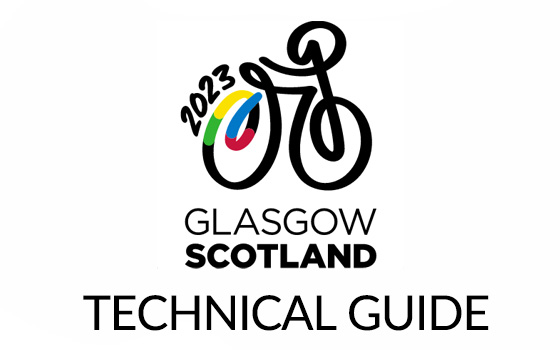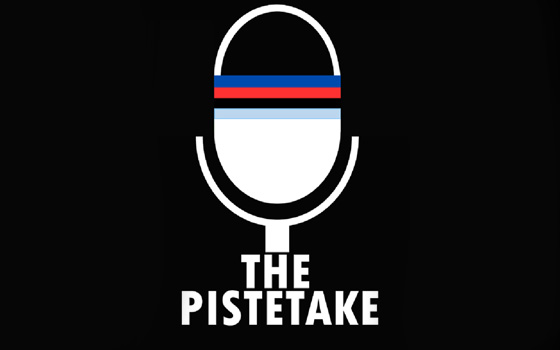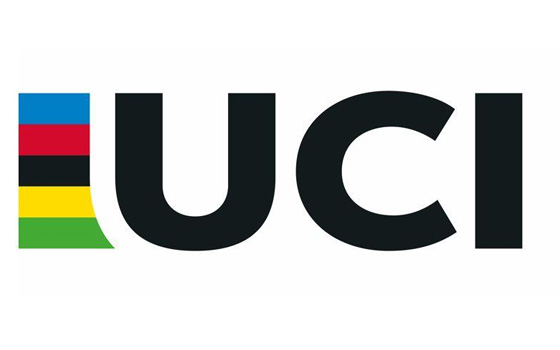What Gearing is Better for my Event?
Whether you are a Sprinter, Endurance rider or Time-Trial Specialist our guide to Track Cycling Gearing assists you in choosing the best gear for your event, be it the Track Cycling Sprint, Scratch Race, Pursuit, 500m Time Trial or even just your local Track League
..........................................................................................................
What Gearing is better for Sprint Events?
A common misconception is that Sprinters ride huge gears, whilst this is generally true they are not that big in comparison to pursuiters or road time trialists as sprinting requires more acceleration and explosive power.
It is really a personal preference on the gear you use for each event and the optimum gearing is only really achieved with experience, however generally sprinters use 98-100 inch gearing.
..........................................................................................................
What Gearing is better for Endurance/Track League Events?
Endurance riders generally use the same if not larger gearing that Sprinters, this is mainly because endurance riders like to get up to speed and then sit on top of a large gear and roll it around the Velodrome.
Again, it is really a personal preference on the gear you use for each event and the optimum gearing is only really achieved with experience, gearing can vary 92 to 96 inches for outdoor events and 94 to 98 inch gearing for indoor, however its all about what is right for you.
..........................................................................................................
What Gearing is better for Time Trial Events?
The biggest gears on the Track are used in the Pursuit as other than the start, this event is about maintaining speed rather than building it. Again, it is really a personal preference on the gear you use for each event and the optimum gearing is only really achieved with experience. Start-Technique is a huge factor as it maybe fine to use a 103 inch gear but if you loose two seconds coming out of the gate then there is little point.
Crank size can also come into play in the Pursuit as the bigger the crank the more leverage you have on the gear, hence it is common to see pursuiters on anything up to 180mm cranks. These crank lengths are perfectly safe to use on all tracks if ridden correctly, however you do need to respect the guidelines put in place by each facility.
..........................................................................................................
What Gearing is better for Fixed Gear Road Riding?
The main factor to consider when choosing a gear for your fixed gear road bike used either for commuting or training is the terrain in which you live and ride in.
For example if you live in a flat area you can have a higher gear that will enable you to maintain a higher average speed on the flat. Something like a 46 x 15 (82) or 46 x 16 (77) would be ideal however the best thing to do is experiment.
Hilly areas would need a much lower gear to enable you to cope with the climbs without having to get off and walk. Something like a 46 x 16 (77) or 46 x 17 (73) would be ideal, however again its all about experimentation.
TOP TIP: Make sure your wheel has a double sided hub, you will then be able to fit another sprocket on the other side to change your gear mid ride if necessary. This could be a Fixed or Freewheel (make sure you have brakes!) Sprocket and would offer you a great deal of variation to your Singlespeed ride without the need for a normal freewheel road bike etc.
..........................................................................................................
What is the best Gearing combination?
Many different gearing combinations can be obtained by using different sized chainrings and sprockets enabling you to totally customise your setup, however if two different Chainring/Sprocket combinations provide a similar gear, which combination is best?
An example of using the same/similar gear but with different Chainring/Sprocket combinations is 50x15 (90.0) and 47x14 (90.7), the 50x15 would suit Time Trial/Pursuit riders more due to the larger chainring, that is slower to accelerate but easier to maintain your average cadence (pedalling rpm), whereas your cadence will be obtained quicker with the smaller 47x14 chainring setup as the smaller chainring enables a much quicker acceleration hence this technique is better for short distance/sprinters. Further examples are 45x13 (93.5) instead of 49x14 (94.5), even though the 45x13 is smaller the benefits of using a similar gear with a smaller chainring are hugely advantageous for acceleration.
If you have a decent length of dropout on your frame your chain can be adapted to fit a wide range of gearing combinations, some riders prefer to keep the same sprocket and use a different chainring, for example 46x15 for warmup, 50x15 for racing, 46x14 for warmup, 48x14 for racing etc. This is fine for endurance/track league riders, however sprinting needs a lot more combinations so a double-sided hub maybe ideal with for example a 13/15 Sprocket and 46/49 Chainring rotation. You could then use 46x15 for warmup, change the chainring to 49x15 for under-gear efforts, swap the wheel around and change the chainring for 46x13 for race-gear efforts and change the chainring for 49x13 for over-gear efforts.
The correct gearing preference for all Track Cyclists is always a personal decision and something that only experience and lots of experimentation can enable you to decide. You can view and print (for free) an A4 version of our gear chart here - http://www.velodrome.shop/index.php?p=page&page_id=gear so you always have a reference.
Changing the sprocket does not cause pedalling efficiency problems, as mentioned above the chainring can do this, the 49x14 is a large gear so will feel harder and like you are straining the components. One important thing to remember is your chain tension. Unfortunately it is hard to demonstrate the amount of slack/tension required without actually putting the chain on the bike for you and demonstrating, however the chain should be as loose as possible without you being able to roll (by hand) the chain off the chainring. The key is to keep playing around with your setup until you can achieve this tension as once you've obtained this tension you'll quickly know how much alignment/tightening you'll need. Too tight and the bike will make a noise and pedalling will feel harder than necessary.
..........................................................................................................
What Gearing is better for Sprint Events?
A common misconception is that Sprinters ride huge gears, whilst this is generally true they are not that big in comparison to pursuiters or road time trialists as sprinting requires more acceleration and explosive power.
It is really a personal preference on the gear you use for each event and the optimum gearing is only really achieved with experience, however generally sprinters use 98-100 inch gearing.
..........................................................................................................
What Gearing is better for Endurance/Track League Events?
Endurance riders generally use the same if not larger gearing that Sprinters, this is mainly because endurance riders like to get up to speed and then sit on top of a large gear and roll it around the Velodrome.
Again, it is really a personal preference on the gear you use for each event and the optimum gearing is only really achieved with experience, gearing can vary 92 to 96 inches for outdoor events and 94 to 98 inch gearing for indoor, however its all about what is right for you.
..........................................................................................................
What Gearing is better for Time Trial Events?
The biggest gears on the Track are used in the Pursuit as other than the start, this event is about maintaining speed rather than building it. Again, it is really a personal preference on the gear you use for each event and the optimum gearing is only really achieved with experience. Start-Technique is a huge factor as it maybe fine to use a 103 inch gear but if you loose two seconds coming out of the gate then there is little point.
Crank size can also come into play in the Pursuit as the bigger the crank the more leverage you have on the gear, hence it is common to see pursuiters on anything up to 180mm cranks. These crank lengths are perfectly safe to use on all tracks if ridden correctly, however you do need to respect the guidelines put in place by each facility.
..........................................................................................................
What Gearing is better for Fixed Gear Road Riding?
The main factor to consider when choosing a gear for your fixed gear road bike used either for commuting or training is the terrain in which you live and ride in.
For example if you live in a flat area you can have a higher gear that will enable you to maintain a higher average speed on the flat. Something like a 46 x 15 (82) or 46 x 16 (77) would be ideal however the best thing to do is experiment.
Hilly areas would need a much lower gear to enable you to cope with the climbs without having to get off and walk. Something like a 46 x 16 (77) or 46 x 17 (73) would be ideal, however again its all about experimentation.
TOP TIP: Make sure your wheel has a double sided hub, you will then be able to fit another sprocket on the other side to change your gear mid ride if necessary. This could be a Fixed or Freewheel (make sure you have brakes!) Sprocket and would offer you a great deal of variation to your Singlespeed ride without the need for a normal freewheel road bike etc.
..........................................................................................................
What is the best Gearing combination?
Many different gearing combinations can be obtained by using different sized chainrings and sprockets enabling you to totally customise your setup, however if two different Chainring/Sprocket combinations provide a similar gear, which combination is best?
An example of using the same/similar gear but with different Chainring/Sprocket combinations is 50x15 (90.0) and 47x14 (90.7), the 50x15 would suit Time Trial/Pursuit riders more due to the larger chainring, that is slower to accelerate but easier to maintain your average cadence (pedalling rpm), whereas your cadence will be obtained quicker with the smaller 47x14 chainring setup as the smaller chainring enables a much quicker acceleration hence this technique is better for short distance/sprinters. Further examples are 45x13 (93.5) instead of 49x14 (94.5), even though the 45x13 is smaller the benefits of using a similar gear with a smaller chainring are hugely advantageous for acceleration.
If you have a decent length of dropout on your frame your chain can be adapted to fit a wide range of gearing combinations, some riders prefer to keep the same sprocket and use a different chainring, for example 46x15 for warmup, 50x15 for racing, 46x14 for warmup, 48x14 for racing etc. This is fine for endurance/track league riders, however sprinting needs a lot more combinations so a double-sided hub maybe ideal with for example a 13/15 Sprocket and 46/49 Chainring rotation. You could then use 46x15 for warmup, change the chainring to 49x15 for under-gear efforts, swap the wheel around and change the chainring for 46x13 for race-gear efforts and change the chainring for 49x13 for over-gear efforts.
The correct gearing preference for all Track Cyclists is always a personal decision and something that only experience and lots of experimentation can enable you to decide. You can view and print (for free) an A4 version of our gear chart here - http://www.velodrome.shop/index.php?p=page&page_id=gear so you always have a reference.
Changing the sprocket does not cause pedalling efficiency problems, as mentioned above the chainring can do this, the 49x14 is a large gear so will feel harder and like you are straining the components. One important thing to remember is your chain tension. Unfortunately it is hard to demonstrate the amount of slack/tension required without actually putting the chain on the bike for you and demonstrating, however the chain should be as loose as possible without you being able to roll (by hand) the chain off the chainring. The key is to keep playing around with your setup until you can achieve this tension as once you've obtained this tension you'll quickly know how much alignment/tightening you'll need. Too tight and the bike will make a noise and pedalling will feel harder than necessary.



